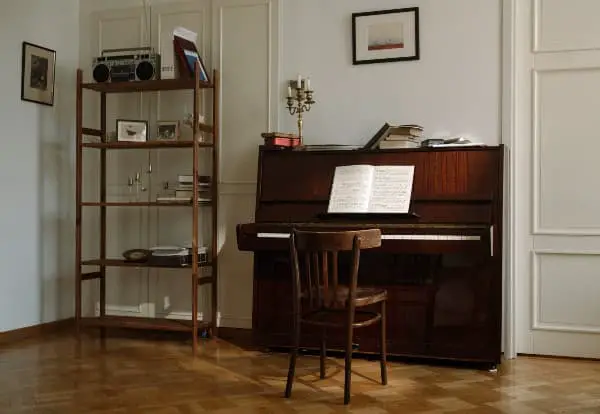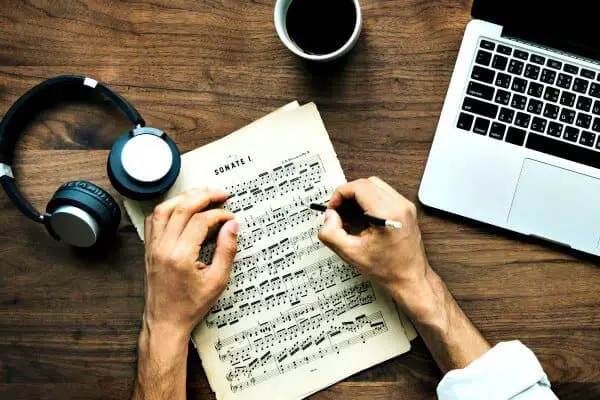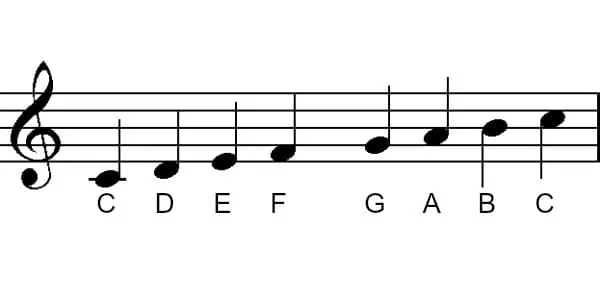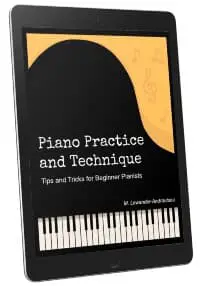- Home
- Learn to Read Music
- Reading Piano Music
Reading Piano Music with Ease
This article may contain compensated links. Please read the disclosure for more info.
Reading piano music can be made easier if you learn the method of music score mapping.
Mapping out the different musical patterns before you begin a new piano piece, helps you see the music score in a whole new light! In this lesson you'll learn how you can use this in your own piano practice.
Reading Piano Music
Reading piano music can be done easier by first of all “mapping out” the piece.
By looking at the whole piece, and “mapping out” similar or parts that are the same, you will not only get an overview of the piece but you can also avoid getting stuck in the beginning measures…
Why?
Psychology. When starting out with a new piece it is easy to feel confused, and to see the score only as a huge bunch of black "dots".
Working with the first few measures and (usually) learning them properly; that is hands separately, playing slowly and such, will make that fist part feel “homey and cozy”.
It creates a certain satisfaction of actually reading piano music and being able to play at least a little bit of the piece.
What happens when we feel good about something? We want to do it again, and again…
The rest of the piece will now feel even more intimidating to learn, since the first part sounds so gooood…
You get the idea. Almost all beginner piano students are struggling in this way when reading piano music. So, what to do?
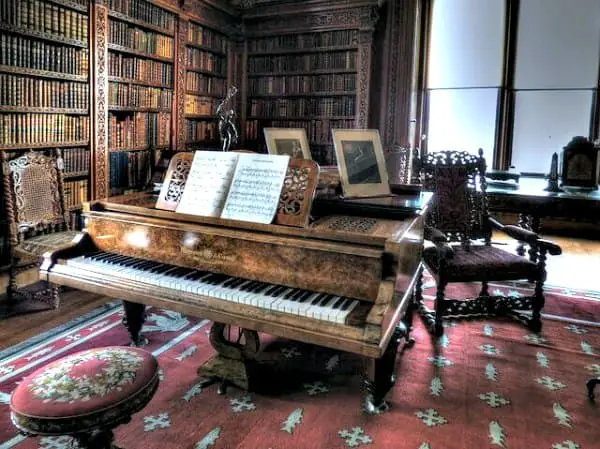
Piano Score “Mapping”
Mapping the score is easy when you know what to look for. Start with bigger areas, then go to smaller and smaller. Here is what to do step by step:
First MAP Out The Whole Piece
- Divide the piece in bigger parts (A-part, B-part etc.)
- Divide the piece in medium parts ( phrases, or 2-4 measures)
- Divide the piece in smaller parts (themes, little motives; especially if repeated somewhere else in the piece.
- Find all the scales, chords and intervals.
Take a look at this example I created:
Piano Score Mapping; (Arabesque by Burgmuller) PDF. (Click to open PDF in a new window).
I have marked the different parts in colors.
- The colors that are the same, means the parts are the same.
- A different shade means the part is similar.
- Different colors means different parts.
So how do you use this when practicing?
- Study all the same and similar parts first.
- Next, learn the end and the beginning as soon as possible, then the rest.
Tip: If you need more help with reading piano music, check out this book: Learning to Read Music.
Now Get to Work Reading Piano Music!
Here are all the steps, including how to prepare everything in the score, scales, fingering and all. It may seem like a lot, but you will learn the piece much faster, and it will make it easier to memorize the piece later if you want to.
- Practice the scales, chords and intervals (blocked), in the whole piece. Practice hands separately, you don't need to play hands together unless that is what you have in the music. Broken chords and melodic intervals should first be played blocked, or simultaneously. Why? Because it is easier for the brain to learn when you "chunk" information. Make sure you are using the correct fingering as well, so that the “muscle memory” will kick in sooner.
- Check out the fingering, and write any changes you make- then try to stick to it! You can learn the piano notes easily if you keep the same fingering from the start.
- Find all the musical themes and motives in the piece. Practice them hands separately, and learn to recognize any similarities. Save time by finding identical passages. If there are any passages that seem hard, practice each such place as a warm up slowly 3 times each day before you start practicing the piece.
- Now tackle each of the medium parts. 2-4 measures at a time (mark them out) depending on how hard the piece is. Follow this formula for really “grinding in” each 2-4 measure part.
- Combine each medium part with the previous.
- Make sure to check out any similar or identical parts in the whole piece, practice them as well.
- With my students, we often follow a “cleverly lazy” approach. Find out how many measures that are completely different. The count how many measures you actually have to learn…. You might be happily surprised how many repetitions (= less work!) there actually are in piano sheet music!
Finally, here's a little trick that will help to improve any future performance...
Question: What is the part of a piano piece we normally learn the best?
Answer: The beginning.
Question: If you play a less than perfect performance, what do you prefer?
- Playing the whole piece perfectly and goofing up the end terribly.
- "Goofing up" the beginning, and playing well until the end.
- Playing a perfect beginning, goof up in the middle and finish with brilliance.
Answer: (At least my preference) Nr. 3. If you start well, you will get better confidence, and the audience will pay more attention- like giving a nice first impression. Sure it is not fun to goof up- but it happens. Ending the piece with flair, will "forgive" the previous mistakes.
Begin with the End...
Never underestimate the sound that remain in the room after the last piano note is played. It can be “AAAH!” or “Aww…”
Why not the second choice? Well, you need to have confidence and self-determination of steel to play well after making a terrible start.
So it's not so common. But it happens. So, the conclusion of this (totally biased) quiz is:
Learn the end first. Then the beginning of the piece.
However, if you follow the plan above, and the piano practice tips here, you can be quite “bulletproof” the rest of the piano piece as well!
